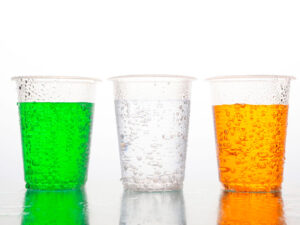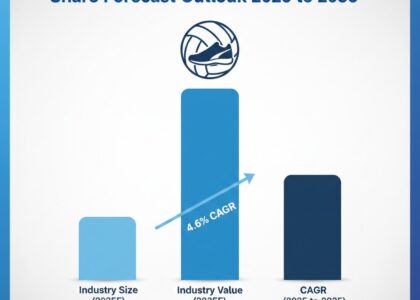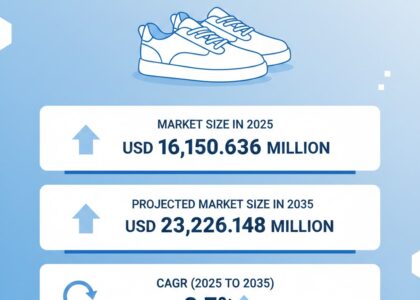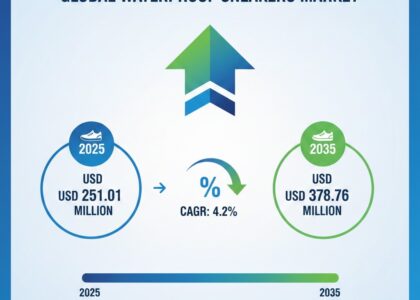
The beverage cups market share analysis is a silent yet substantial pillar of the global foodservice and consumer packaging industry. Whether it’s a morning coffee on the go, a soft drink from a fast-food chain, or an eco-friendly smoothie cup from a health cafe, beverage cups are everywhere. From 2025 to 2035, this segment is expected to witness considerable transformations, driven by sustainability mandates, urban consumption habits, and changing lifestyles.
The global beverage cups market is projected to experience robust expansion from 2025 to 2035, spurred by the rapid growth in on-the-go food and beverage consumption, increased urbanization, and a notable shift toward sustainable packaging. The market is also being reshaped by government regulations targeting plastic reduction, which is driving innovation in material sourcing and production technologies.
Discover Growth Opportunities in the Market – Get Your Sample Report Now
https://www.futuremarketinsights.com/reports/sample/rep-gb-20848
Beverage cups refer to disposable or reusable containers specifically designed to hold a variety of hot and cold drinks, such as coffee, tea, juice, smoothies, water, soft drinks, and alcoholic beverages. These cups are manufactured using materials such as paper, plastic, foam, bioplastics, or compostable polymers.
Beverage cups are often paired with lids and sleeves for insulation and spill prevention and are widely used in restaurants, cafes, food trucks, vending machines, and convenience stores.
Emerging Trends and Market Innovations
- Rise of Reusable and Smart Beverage Cups: Smart cups embedded with RFID tags, sensors, or thermal indicators are entering premium segments, particularly in cafes and co-working spaces. These innovations enable temperature monitoring, customer interaction, and refill tracking. Simultaneously, the reusable cup movement is gaining pace with brands offering deposit-return schemes and incentives for customers using reusable cups.
- Shift Toward Plant-Based and Compostable Materials: Companies are exploring plant-derived polymers, such as polylactic acid (PLA) and PHA, to manufacture compostable beverage cups. This trend not only meets legislative requirements but also positions companies as environmentally responsible, appealing to Gen Z and millennial consumers.
- Automation and Robotics in Beverage Cup Production: The use of robotic arms, automated packaging lines, and IoT-driven monitoring systems is improving production efficiency. Automation reduces labor dependency and human error, ensuring consistency and quality at scale.
Surging Demand for On-the-Go and Takeaway Beverages
Urbanization and time-pressed lifestyles are leading to a growing culture of on-the-go consumption. Consumers increasingly prefer takeaway beverages, boosting demand for disposable, lightweight, and insulated beverage cups. Quick-service restaurants (QSRs), coffeehouses, and mobile food vendors are key contributors to this trend.
Sustainability and Eco-Friendly Materials: The Game Changers
Regulations like the EU Single-Use Plastics Directive, and growing awareness of plastic pollution are pushing beverage cup manufacturers to adopt biodegradable and compostable alternatives. Brands that align with eco-conscious consumer expectations are witnessing improved loyalty and market presence. Innovative materials like sugarcane bagasse, bamboo pulp, and recyclable bioplastics are gaining traction.
Rising Influence of Customization and Brand Marketing
Modern beverage cups are more than just containers; they are branding canvases. Businesses are investing in custom-printed cups with QR codes, loyalty messages, and campaign visuals. Customization not only enhances brand recall but also improves customer engagement.
Technological Advancements in Manufacturing and Printing
Advanced manufacturing technologies are enabling multi-layer insulation, anti-leak coatings, and digital flexographic printing. These innovations improve functionality and aesthetics while reducing the environmental impact. Manufacturers are optimizing cup thickness, stacking efficiency, and material integration to meet both performance and sustainability goals.
Competitive Landscape in the Beverage Cups Market Share Analysis
The beverage cups market is highly competitive, with both global and regional players vying for market share. Leading companies are investing in sustainable production, automated machinery, and strategic partnerships with QSR chains and packaging distributors. Some key players in the market include:
- Huhtamaki Oyj: A global leader in sustainable food packaging, offering paper and compostable cups designed for hot and cold beverages. Strong focus on recyclability and bio-based materials.
- Dart Container Corporation: Specializes in foam and plastic cups, emphasizing cost-effective solutions for large-scale food service and quick-service restaurants (QSRs). Innovations include insulated cups for temperature retention.
- Georgia-Pacific LLC: Known for its Dixie® brand, providing high-quality paper and plastic cups with leak-resistant designs, catering to both commercial and retail consumers.
- Graphic Packaging International: A pioneer in fiber-based beverage cup solutions, focusing on recyclable and sustainable alternatives to traditional plastic cups, aligning with circular economy initiatives.
- Genpak, LLC: Offers a diverse range of disposable cups, including compostable and eco-friendly designs, targeting convenience stores, coffee shops, and fast-food chains.
- Berry Global Inc.: A key player in plastic cup manufacturing, integrating recycled materials and lightweight designs to enhance sustainability while maintaining product durability.
- Pactiv Evergreen Inc.: Focuses on both traditional and sustainable beverage cup solutions, with a strong presence in North American foodservice markets. Known for their paper-based cups with moisture-resistant coatings.
Beverage Cups Market Share Analysis Segmentation
By Targeted End-User Key Industries:
- Quick-Service Restaurants (QSR) & Coffee Chains
- Food & Beverage Packaging
- Institutional & Office Spaces
- Retail & Convenience Stores
By Vendor-Focused Product Categories:
- Paper Cups
- Plastic Cups
- Reusable Cups
- Smart Cups
About Future Market Insights (FMI)
Future Market Insights, Inc. (ESOMAR certified, recipient of the Stevie Award, and a member of the Greater New York Chamber of Commerce) offers profound insights into the driving factors that are boosting demand in the market. FMI stands as the leading global provider of market intelligence, advisory services, consulting, and events for the Packaging, Food and Beverage, Consumer Technology, Healthcare, Industrial, and Chemicals markets. With a vast team of over 400 analysts worldwide, FMI provides global, regional, and local expertise on diverse domains and industry trends across more than 110 countries.
Contact Us:
Future Market Insights Inc.
Christiana Corporate, 200 Continental Drive,
Suite 401, Newark, Delaware – 19713, USA
T: +1-347-918-3531
For Sales Enquiries: sales@futuremarketinsights.com
Website: https://www.futuremarketinsights.com
LinkedIn| Twitter| Blogs | YouTube





